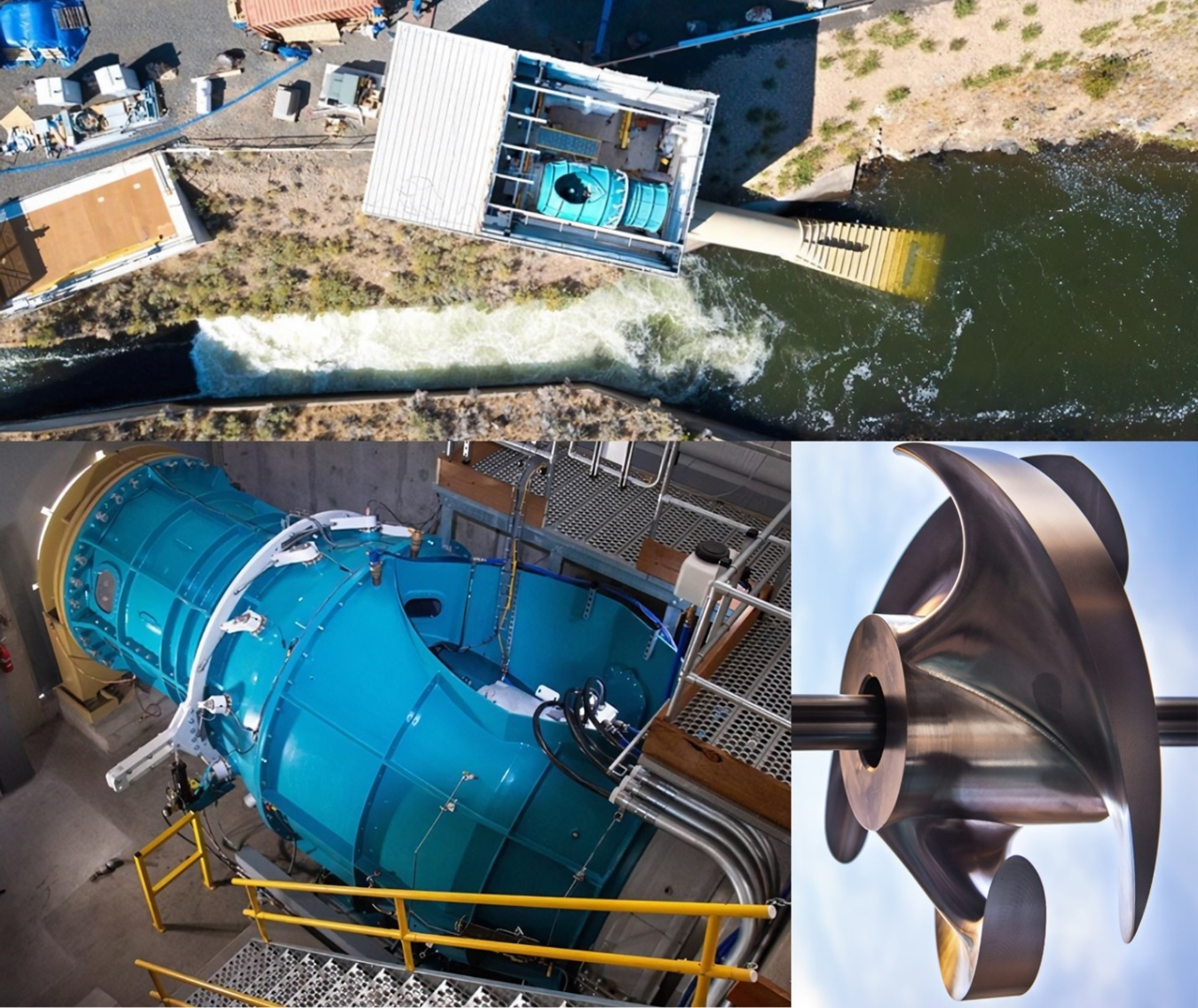Natel’s RHT can be installed at a variety of hydroelectric facilities, removing compromise between generation efficiency and biological performance.
Water Power Technologies Office
December 10, 2020In late September 2020, Pacific Northwest National Laboratory (PNNL) executed tests that revealed a 100% survival rate for up to 15 inches long fish passing through Natel Energy’s 1.9-meter diameter D190 Restoration Hydro Turbine (RHT) at the Monroe Drop Site in Madras, Oregon. Supported by the Water Power Technologies Office (WPTO), PNNL’s campaign applied a combination of hydraulic characterization and biological testing with rainbow trout. Utilizing Sensor Fish and Balloon Tag technologies to analyze the physical turbine stressors and recover trout to assess passage condition, PNNL’s test revealed minimal injury or impact to fish passage even when the RHT was operated at full power. These results provide important evidence that, if designed correctly, small hydropower facilities do not have to compromise between generation efficiency and biological performance.
One of the fundamental challenges for hydroelectric owners and operators is ensuring successful fish passage at their facilities. Many are required to routinely submit quantitative measures of performance (e.g., the percentage of fish passed) to maintain their operating licenses. Hydropower technology company Natel Energy is developing innovative solutions to fish passage challenges that can also improve dams’ overall environmental performance across the nation. Distinguished in its philosophy of “Restoration Hydro,” Natel works to advance water resource solutions that produce reliable renewable energy in an ecological, socially acceptable, economically competitive, and resilient manner. The RHT—a key output of the company’s latest R&D efforts—incorporates compact, fish-friendly blades (1–3 meters in diameter) optimized for low-head deployment (sites with between 2 and 10 meters of hydraulic head). By leveraging existing turbine approaches and technologies across much of its design, the RHT minimizes performance and cost risks. The RHT’s hydraulic design is innovative particularly with respect to the thickness of the blades’ leading edges, which are engineered to reduce tip speed and minimize strike probability and harm to fish. This capability will reduce overall installation costs by providing safe fish passage through the turbine, eliminating the need for expensive fish exclusion and downstream passage components. Natel’s RHT can be installed at a variety of hydroelectric facilities, including retrofit of existing turbines, existing non-power dams, run-of-river new stream reach developments, and irrigation canals.

Panorama of the Monroe Drop site and the RHT turbine. Photo: Courtesy of PNNL/Natel
To verify the environmental performance of the RHT, Natel worked with PNNL on a WPTO-funded test at the Bureau of Reclamation’s Monroe Drop irrigation canal site. The experiment involved releasing approximately half of a cohort of 120 trout downstream of a draft tube exit in the tailrace (control group), while the other half (treatment group) were released into the plant intake and passed through the RHT at maximum power. In addition to the release of live test fish, PNNL also deployed the Sensor Fish and clusters of the Sensor Fish Mini, small autonomous devices filled with sensors that analyze the physical stressors that fish experience when passing through or around dams (with the mini version specifically designed for small hydro). The lab team used balloon tags filled with non-toxic chemicals that inflate after the passage event and float to the surface to aid successful retrieval of the test fish for biological evaluations and Sensor Fish recovery for data download. Early conclusions from PNNL’s analysis, which will be published in a full report in early 2021, determined that 100% of the fish passed through the RHT without any harm or significant disturbance. This is the first time that a turbine with the dimensions of the D190 RHT has achieved these kinds of results, and is a highly promising step toward more robust deployment of the technology in the near future. Natel is currently supported by WPTO through multiple competitively selected awards, the most recent being focused on incorporating the RHT runner design into a pre-packaged generation module for low-head hydropower applications that can be easily transported and installed.
Learn more about WPTO’s Hydropower Program.

